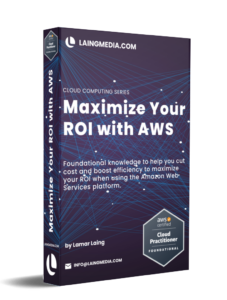There has been a lot of buzz recently around cloud solutions, and with that, architects face the challenge of anticipating current and future scale requirements. Whether it’s accommodating organic growth or sudden surges due to mergers and acquisitions, architects must ensure their solutions can scale seamlessly. Scaling, however, often introduces complexities regarding manageability, performance, and security. Here are five principles and strategies for architecting solutions that scale reliably, mitigating these challenges using Amazon Web Services (AWS).
Modularity: Simplifying Complexity
One key principle for ensuring reliable scalability is modularity. This approach involves breaking down complex components or solutions into smaller, manageable parts. By doing so, architects can make their solutions more scalable, secure, and easier to manage. A prime example of this is the microservices architecture, where applications are constructed from loosely coupled building blocks that integrate through defined interfaces. This separation of concerns allows for independent management, security, and scaling of each component, avoiding the pitfalls of “fate sharing,” where a single failure impacts the entire system.
Horizontal Scaling: Handling Increased Load
Horizontal scaling, also known as scale-out, involves automatically adding systems or instances to distribute increased workloads. For instance, web applications experiencing a surge in session numbers can benefit from horizontal scaling. This approach not only enhances performance but also improves reliability, especially when instances are distributed across Availability Zones. To achieve seamless scale-out, applications should be designed to support a stateless scaling model, where state information is stored independently from application instances.
Leveraging Content Delivery Networks
Incorporating Amazon CloudFront and its edge locations into your architecture can enable rapid and reliable global scaling without adding complexity. For instance, CloudFront played a crucial role in handling the scale demands of Amazon Prime Day 2020, serving millions of HTTP requests per minute. By distributing content through a CDN, you can enhance both performance and reliability.
Embrace Serverless Where Possible
In pursuit of modularity, microservices architecture can introduce complexity as the number of components grows. Serverless services offer a solution to manage this complexity efficiently at scale. With serverless, you no longer need to provision and maintain servers or runtimes. Services like AWS Lambda allow you to run and scale your code effortlessly. Event-driven serverless capabilities are also invaluable in modern cloud solutions.
Secure by Design: Avoiding Post-Scaling Security Challenges
Security should be a concern from the beginning of your solution. Neglecting security in the early stages can lead to significant challenges as your solution scales. Leveraging CDNs like CloudFront can help mitigate DDoS attacks and provide application layer filtering. Furthermore, adopting the Shared Responsibility Model allows you to delegate parts of the security stack to AWS so you can focus on building applications.
Design for Failure: Ensuring Resilience
Reliability at scale hinges on resiliency. When designing for failure, the goal is to create a solution that can recover from infrastructure or service disruptions. Even when components fail, the solution should continue to deliver an acceptable level of functionality. This principle is critical at scale, where the impact of failures can be substantial.
Connect with a Cloud Architect
Architecting for reliable scalability should always be the primary goal. When combined with a DevOps model, these tips can help you build solutions that not only scale but also thrive in an ever-changing cloud landscape. Building today with tomorrow in mind is the key to success in the world of cloud solutions. Curious about how cloud platforms like AWS can help you scale? Reach out to one of our expert Cloud Architects at Laing Media today. www.laingmedia.com
Website vs Social Media for Business Success: Insights from Nike, Apple, Tesla, EVOLVE, Airbnb, and Nipsey Hussle
In today's digital age, businesses and brands often face the dilemma of where to focus their online presence: a website or social media platforms. While social media undoubtedly offers valuable opportunities for engagement and visibility, prioritizing a website...
Unveiling the Digital Mastery of Future & Metro Boomin: A WordPress Triumph
In the ever-evolving digital sphere, Future and Metro Boomin stand out as pioneers, not only for their chart-topping hits but also for their astute online strategies. Alongside their cultural impact, Epic and Republic Records have played pivotal roles in shaping their digital presence, with a meticulously designed website at the forefront, powered by the unparalleled capabilities of WordPress. Let’s dive deeper into how Epic Records, Republic Records, Future, and Metro Boomin leverage WordPress to maintain their dominance in search rankings and captivate their audience.
How NBA Teams are Enhancing Digital Experiences: Migrating from Drupal to WordPress
In the fast-paced world of professional sports, where the NBA Mock Draft seems to start the day after the NCAA Championships. Maintaining an engaging online presence is crucial for teams to connect with fans worldwide. Recently, the Dallas Mavericks, a prominent NBA...
Talk to an expert.
For more information on holiday season content and Laing Media’s digital marketing services.






